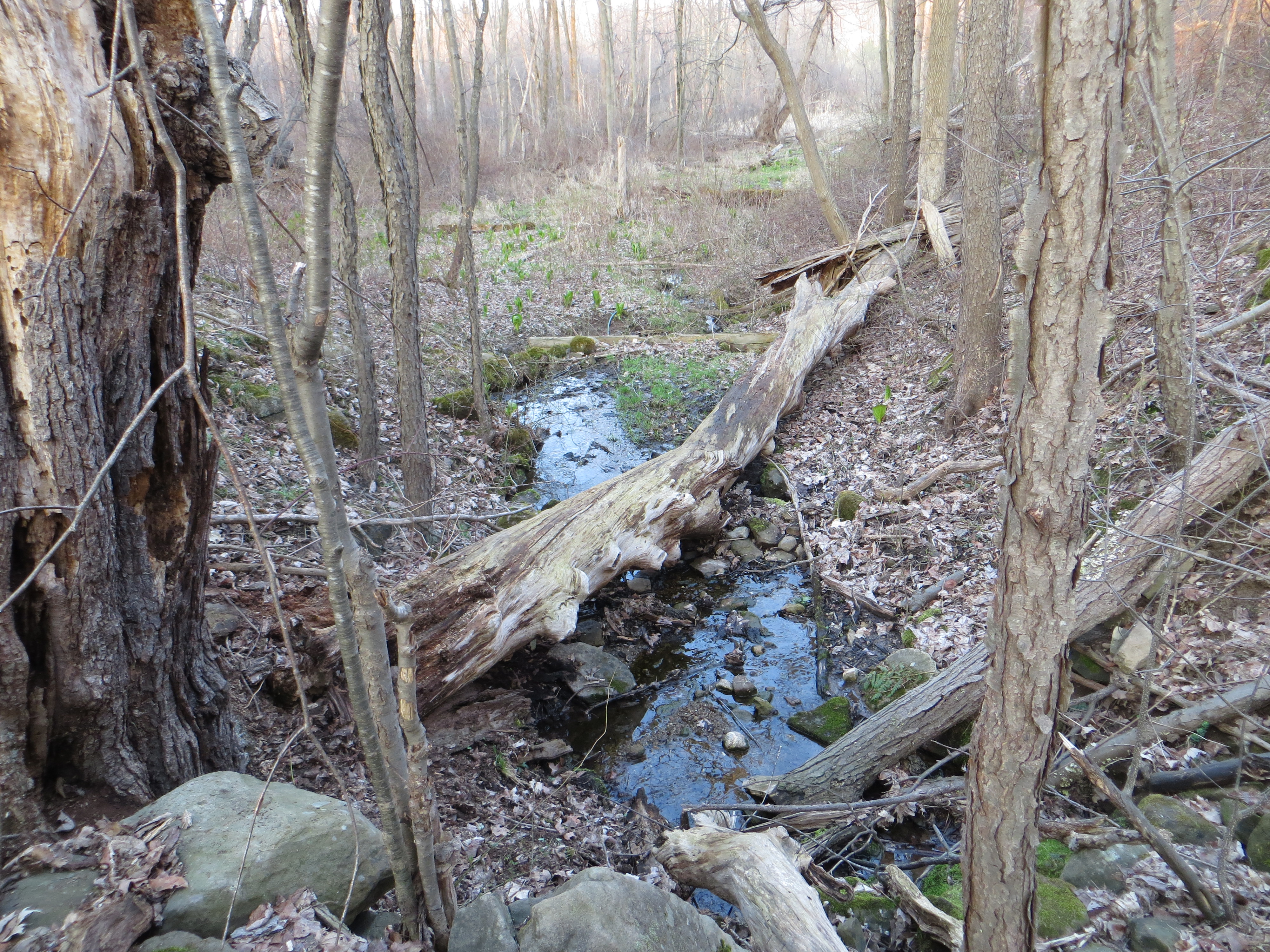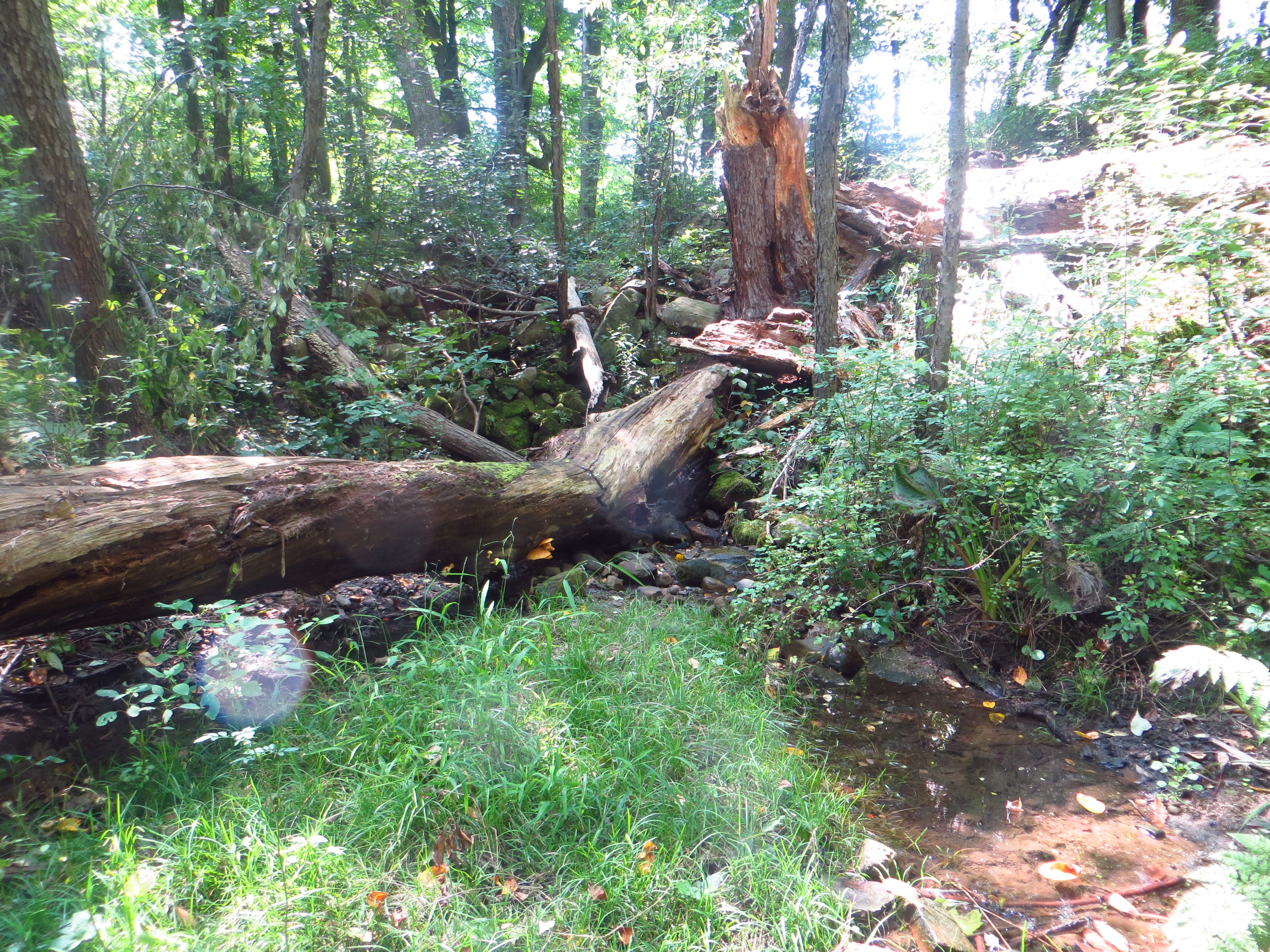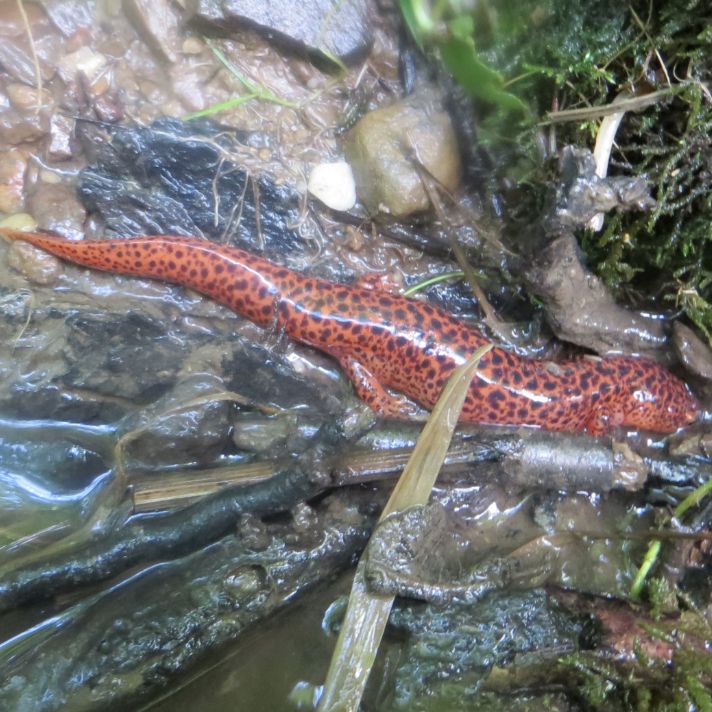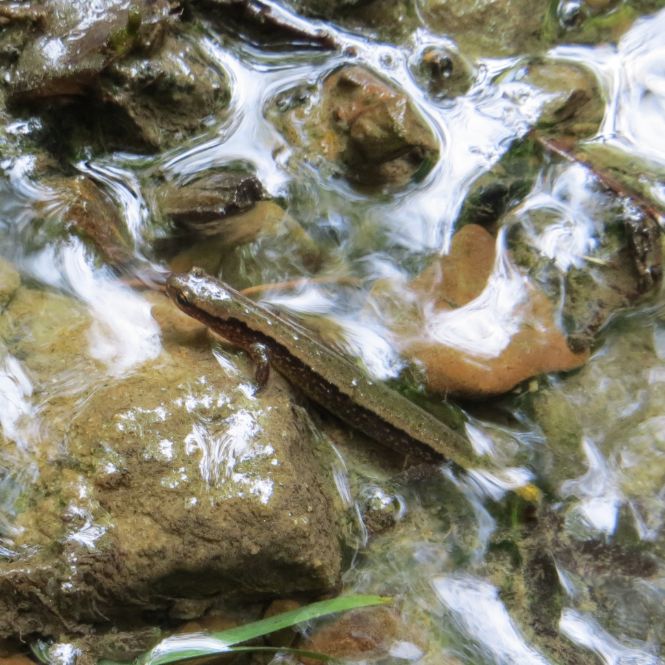FRY FARM IN RICHFIELD, OHIO
HABITAT 2
THE SPRINGS
 |
 |
|
Spring Outflow in Early Spring |
Head of the Spring in August |
Springs and seeps derive their water from underground aquifers and flow either under pressure or because the source is higher in elevation than the outfall. 1) Unlike the limestone springs of western Ohio, the springs that emerge from the sandstones of eastern Ohio are remarkably stable in their temperature and water flow throughout the year. 2) Wherever found, springs can be characterized by their point of emergence. Upland springs originate near the upper end of a cove or ravine, compared to lowland springs which emerge from the base of a slope at the margin of a floodplain. 3)
|
Springs often give rise to to small streams referrred to as headwater streams. Headwater streams can flow year-round (permanent), for part of a year (intermittent) or only during rain events (ephemeral) 4) The springs on the Fry Farm emerge from the sandstone substrate and can be categorized as permanent upland springs. They are remarkably stable in their temperature and water flow throughout the year. The southernmost spring also supports an active growth of watercress and the water can be consumed without filtration or treatment. |
Known amphibian species in these springs include the Northern Red Salamander and the Northern Two-lined Salamander. Both species thrive in this cold-water habitat. The Northern Red Salamander is one of the most colorful species found in Ohio 5) It is confined to the eastern counties of the state in cold springs that are found in mixed deciduous forests that offer continuous shade. 6)
The Northern Two-lined Salamander is one of the smaller salamanders in Ohio. 7) Confined to northeast Ohio, it has been called the most common woodland streamside species in its range. 8) They are also found across the eastern United States. 9) |
1. "Amphibians of Ohio," Ohio Biological Survey, Inc. (2013) p. 43. 2. "Amphibians of Ohio," p. 397-98. 3. "Amphibians of Ohio," pp. 43, 399. |
4. "Amphibians of Ohio," p. 43. 5. "Amphibians of Ohio," p. 395. 6. "Amphibians of Ohio," p. 398-99. |
7. "Amphibians of Ohio," p. 260. 8. "Amphibians of Ohio," p. 259. 8. "Amphibians of Ohio," p. 260. |


